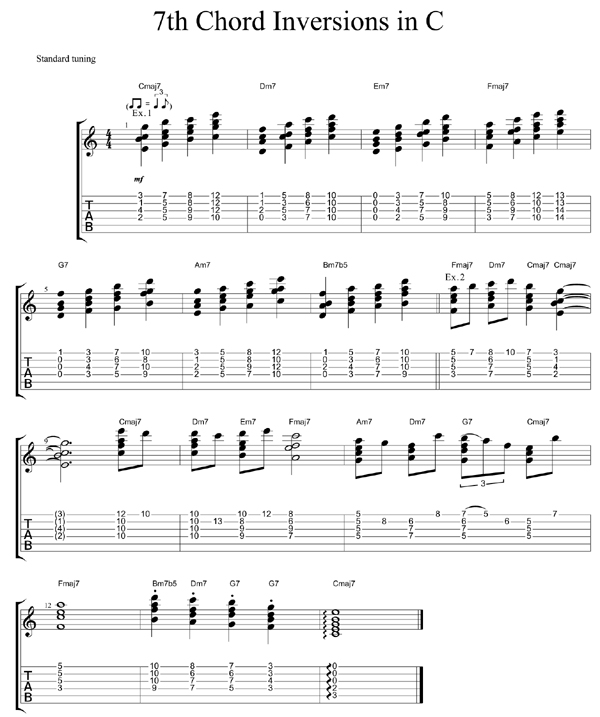This month we’ll be looking the different ways to play diatonic 7th chords along the high E, B, G, and D strings. Seventh chords are created by taking a note and skipping a note until you’ve collected at least four notes. For example, in the key of C major (C,D,E,F,G,A,B,C), the first chord generated would be a C major 7th, containing the notes C,E,G,B. The second chord would be D minor 7th (D,F,A,C), etc.
Once we know what notes are in a given chord we can come up with several ways to mix the notes around. These are known as chord voicings or inversions.
Although we’ve limited ourselves to using only the first four strings for the inversion examples below, you can apply this concept to any grouping of the strings.
Example 1 maps out four inversions for each diatonic seventh chord in the key of C. For each voicing, each note in the chord gets its chance to appear on each of the four strings. Notice how each of these chords sound very much related to one another? That’s because they use the same notes.
Example 2 is a progression that I came up with to give an example of what these chords can sound like when mixed together.
A good way to utilize these chords is to locate and memorize the root note of each chord shape so that you can utilize it in any key. You may have noticed the similarities of some of the chords like Am7 and Cmaj7. Have fun with these, and shoot me an email if you have any questions.
Looking to improve your guitar skills? Call Chambers Guitars for lessons at (615) 898-0055.













